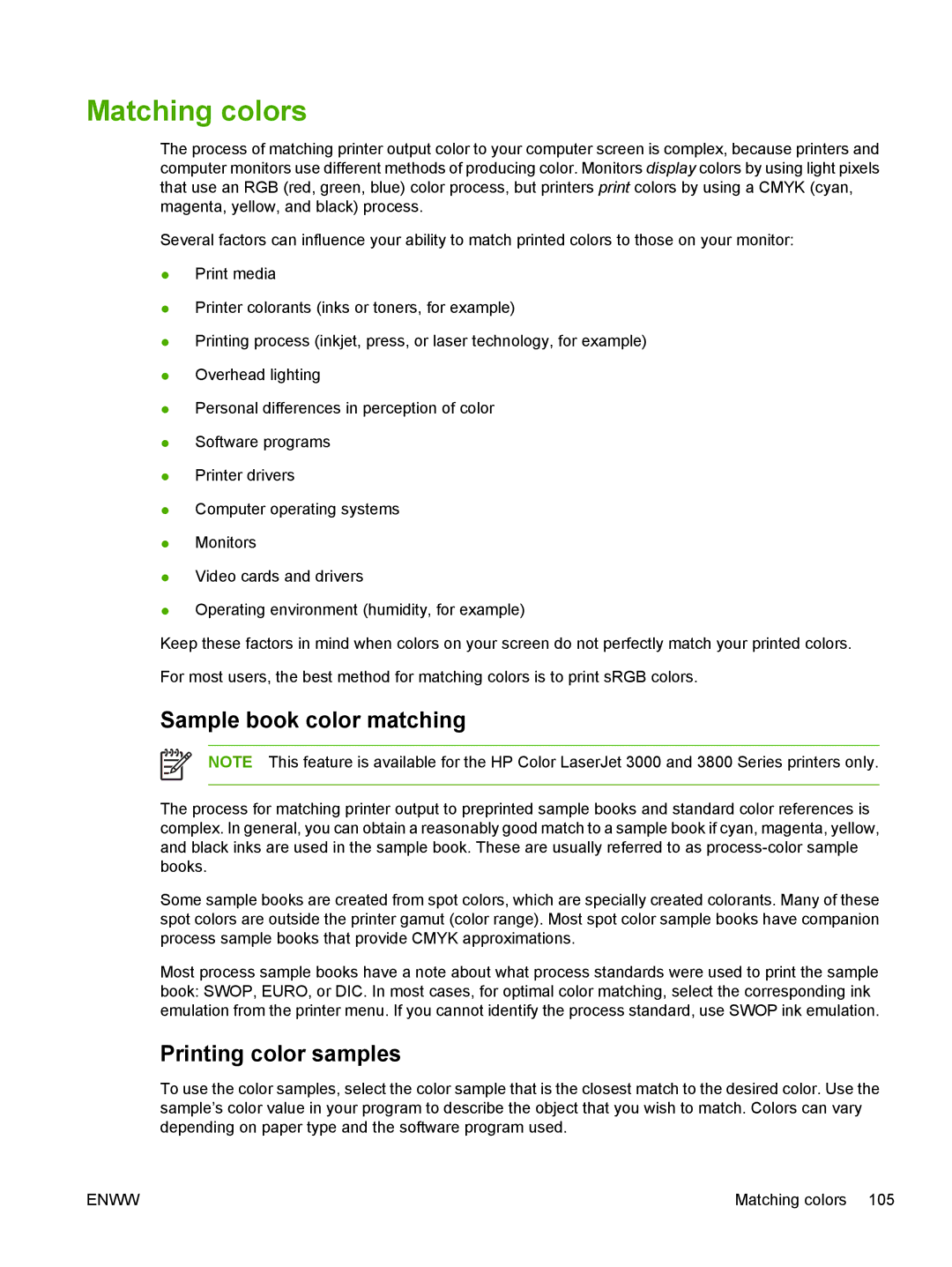Matching colors
The process of matching printer output color to your computer screen is complex, because printers and computer monitors use different methods of producing color. Monitors display colors by using light pixels that use an RGB (red, green, blue) color process, but printers print colors by using a CMYK (cyan, magenta, yellow, and black) process.
Several factors can influence your ability to match printed colors to those on your monitor:
●Print media
●Printer colorants (inks or toners, for example)
●Printing process (inkjet, press, or laser technology, for example)
●Overhead lighting
●Personal differences in perception of color
●Software programs
●Printer drivers
●Computer operating systems
●Monitors
●Video cards and drivers
●Operating environment (humidity, for example)
Keep these factors in mind when colors on your screen do not perfectly match your printed colors.
For most users, the best method for matching colors is to print sRGB colors.
Sample book color matching
NOTE This feature is available for the HP Color LaserJet 3000 and 3800 Series printers only.
The process for matching printer output to preprinted sample books and standard color references is complex. In general, you can obtain a reasonably good match to a sample book if cyan, magenta, yellow, and black inks are used in the sample book. These are usually referred to as
Some sample books are created from spot colors, which are specially created colorants. Many of these spot colors are outside the printer gamut (color range). Most spot color sample books have companion process sample books that provide CMYK approximations.
Most process sample books have a note about what process standards were used to print the sample book: SWOP, EURO, or DIC. In most cases, for optimal color matching, select the corresponding ink emulation from the printer menu. If you cannot identify the process standard, use SWOP ink emulation.
Printing color samples
To use the color samples, select the color sample that is the closest match to the desired color. Use the sample’s color value in your program to describe the object that you wish to match. Colors can vary depending on paper type and the software program used.
ENWW | Matching colors 105 |
